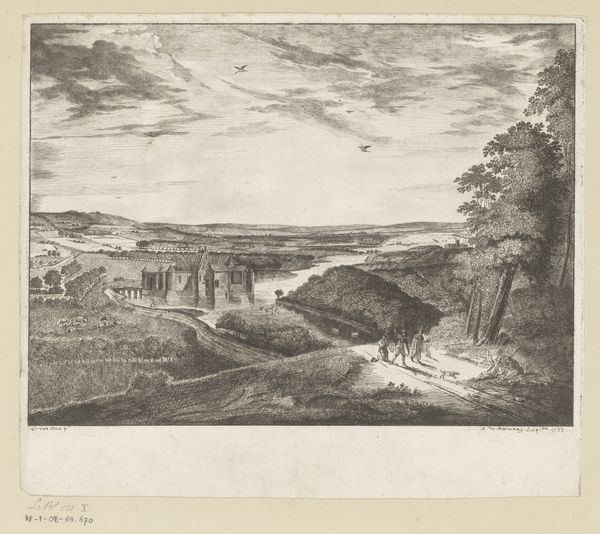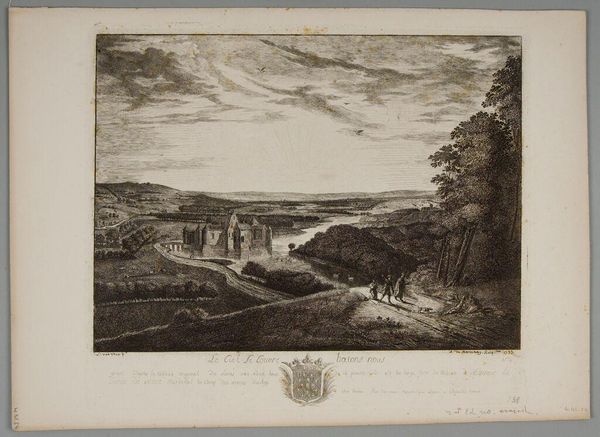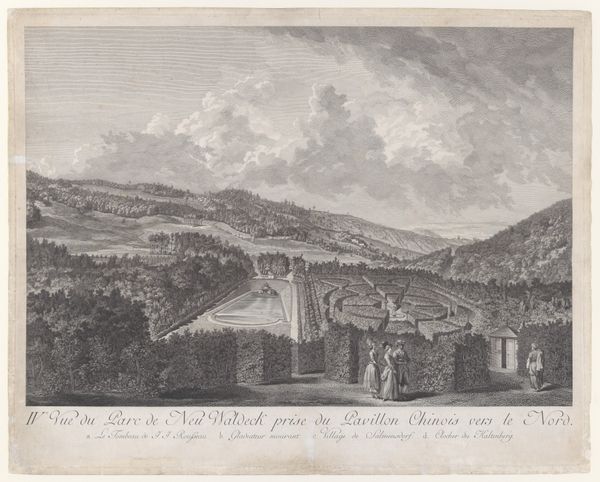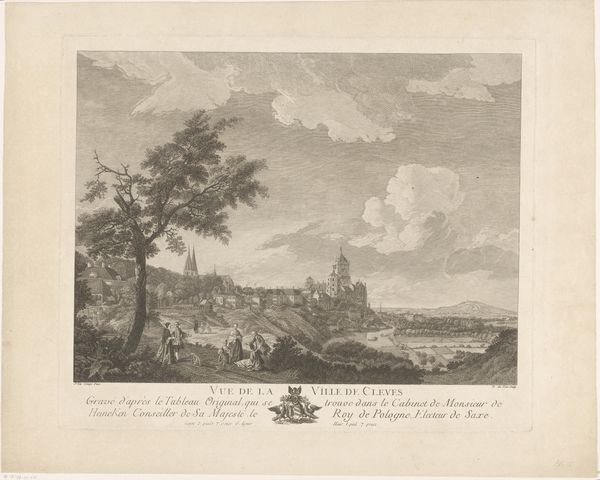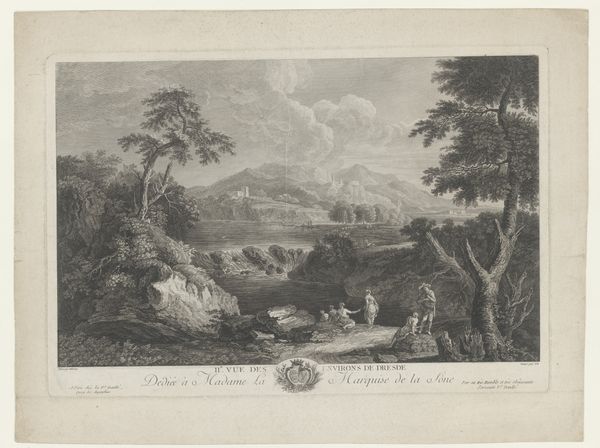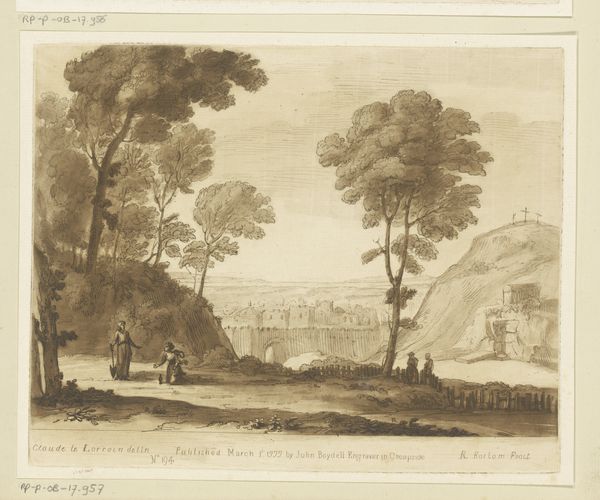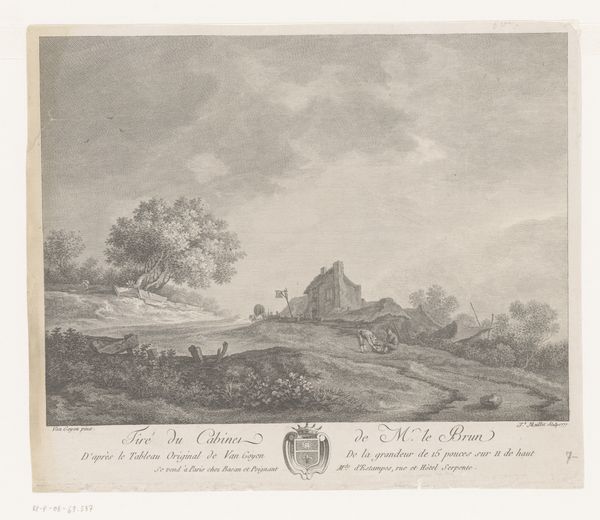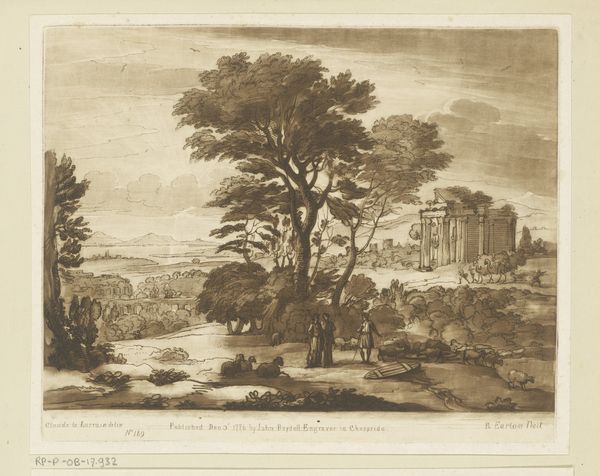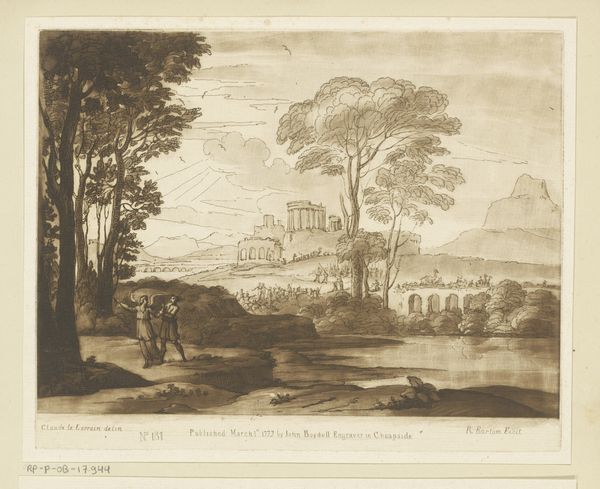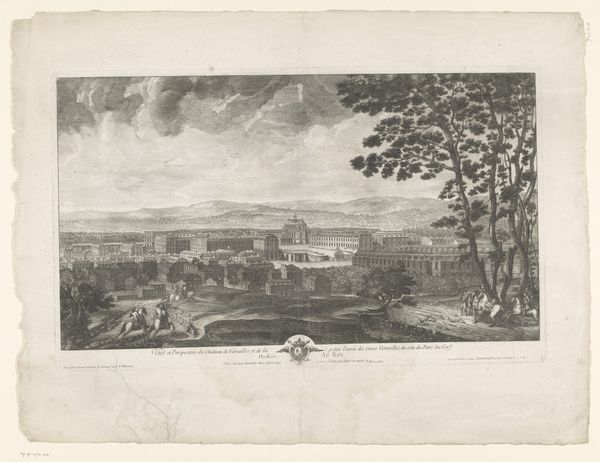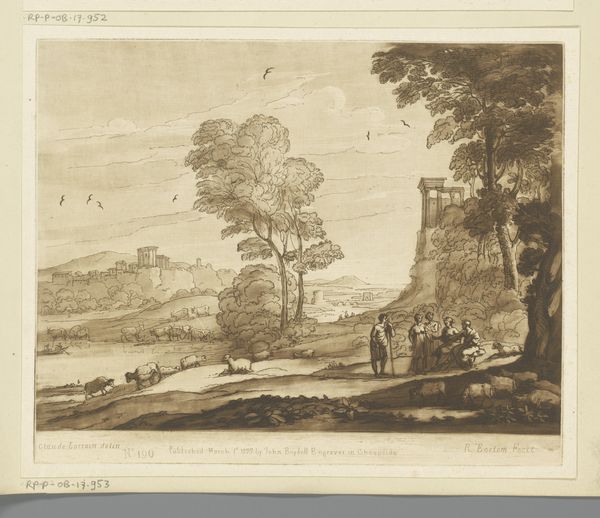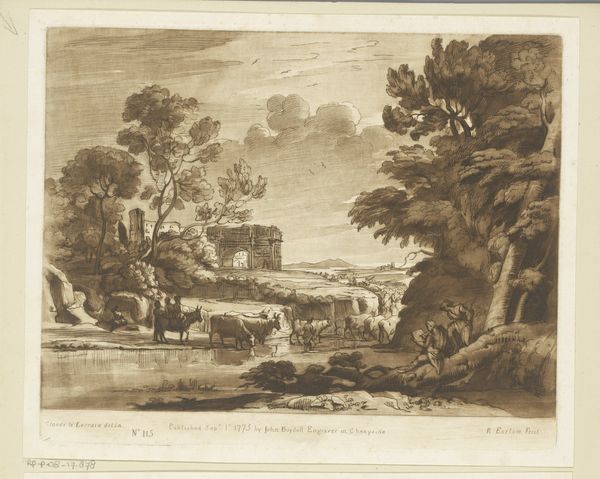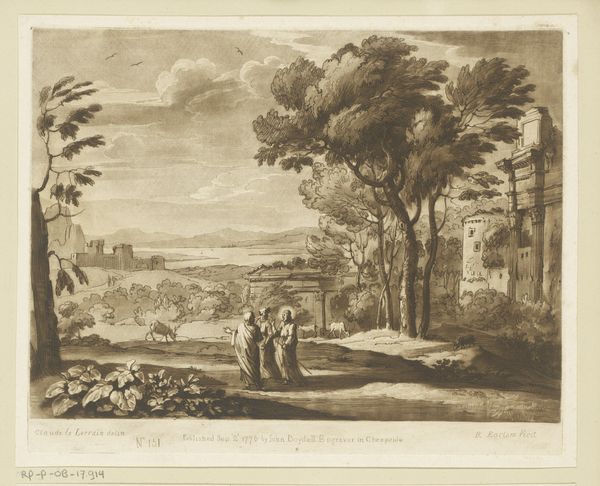
etching, engraving
#
baroque
#
etching
#
old engraving style
#
landscape
#
19th century
#
cityscape
#
engraving
Dimensions: height 244 mm, width 290 mm
Copyright: Rijks Museum: Open Domain
Editor: This is Antoine de Marcenay de Ghuy’s "River Landscape with a Castle and Travelers," created in 1755 using etching and engraving. It evokes a sense of serenity, almost like a stage set, with the figures placed just so. What do you see in this piece? Curator: Let's analyze the structural components. The composition hinges on a distinct separation of space—the castle grounds versus the open landscape. Observe how light articulates the cloud formation to diffuse and soften forms and details in the image, but is also organized by radiating beams to accentuate perspective. How do these contrasting uses of light guide the viewer's eye? Editor: I notice how the beams of light behind the castle highlight it as the center of attention and add an idyllic air. And by contrast, the travellers walking into the light create a natural bridge towards that bright, faraway space... It creates a balance, doesn't it? Curator: Precisely. It isn’t merely mimetic representation. It shows sophisticated compositional choices that guide visual weight and create meaning. The textures achieved through the etching contribute significantly too. Notice the variety in mark-making. Can you articulate how the etcher used these to convey spatial depth? Editor: Yes! Finer lines are in the background to create an impression of distance and scale. Bolder, heavier lines draw closer in, like on the trees... Almost like Baroque staging techniques in a theatre! Curator: It functions similarly, using contrast to engage the observer through both content and the technical decisions underpinning its visual presentation. A very insightful analysis, wouldn’t you agree? Editor: Absolutely! Looking closely at the layering of techniques and their contributions opened my eyes.
Comments
No comments
Be the first to comment and join the conversation on the ultimate creative platform.
